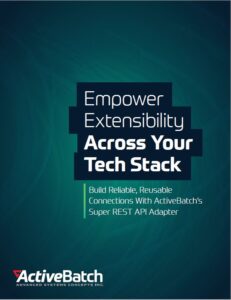Cloud Repatriation Isn’t Going Away — Here’s How To Prepare

Organizations are executing more workloads in the cloud than ever before. This trend towards cloud-based workloads over on-premises workloads will continue as businesses accelerate cloud-centric initiatives and multi-cloud strategies. Gartner expects that 40% of all enterprise workloads will be deployed in cloud infrastructure by 2023, up from only 20% in 2020.
But how many of these workloads will stay in the cloud?
Cloud repatriation can happen for a variety of reasons. Changes in data regulations can make it necessary to move certain information to a private cloud or on-premises data center. Sometimes costs are more manageable on-premises, or perhaps a business has shifted its approach to cloud infrastructure.
There are plenty of valid reasons for cloud repatriation, but how common is it, actually? There are a wide variety of statistics to look at.
Compared to the exponential growth in data, most of which is being stored and processed in the cloud, the total volume of repatriated cloud workloads is small. However, repatriation is something that most IT operators will have to deal with, if they haven’t already. The Uptime Institute found that 32% of data center operators repatriated workloads back to a private cloud or on-premises.
“The most common primary reason for repatriation was cost, followed by regulatory compliance (including financial governance or compliance with privacy laws). Other reasons included performance issues and perceived concerns over security.” — Uptime Institute Global Data Center Survey 2021
AFCOM on the other hand found that 58% of respondents repatriated workloads in 2021. What accounts for this discrepancy? There could be confusion over what constitutes repatriation. While the Uptime Institute lists cost, compliance and security as the top reasons for repatriation, other industry analysts (as well as those replying to surveys) will consider testing and QA as instances of repatriation.
What’s interesting is that repatriation seems to be declining. AFCOM’s report noted that in 2020, 70% of data center operators had repatriated workloads, compared to 58% in 2021. In 2018, IDC found that 80% of IT decision makers had repatriated workloads that year. For IDC’s report, security, performance, cloud cost and control were the main drivers of repatriation.
It seems, then, that repatriation is not as common as it was a few years ago. This decline makes sense — workload placement is expected to solidify, to a degree, as hybrid IT strategies become more mature, with organizations having enough time to figure out what workloads need to run where.
So while there is debate over how common repatriation is, it’s difficult to argue that it doesn’t happen (as some have suggested).
Stay ahead of business needs with reliable, reusable integrations
See how API adapters enable developers of any skill level to build connections for end-to-end processes and IT services.
Is Cloud Repatriation Unlikely To End?
Cloud repatriation is unlikely to go away anytime soon as cloud adoption increases. Many organizations adopted cloud services and infrastructure in response to COVID-19 and lockdowns. These decisions were made quickly and often weren’t part of a larger cloud strategy — organizations had to rapidly deploy cloud-based tools.
As organizations fine-tune their cloud strategies, many deployments made in the early pandemic are likely to be reassessed as lockdowns come to an end and organizations return to physical spaces. This leaves open the door for further repatriation, as well as migrations to other cloud providers, public or private.
Overall, moving to the cloud is a complex process with lots of room for error. This can include poorly executed lift-and-shifts, ad hoc deployments without a concrete strategy and over-estimates about the savings cloud can provide. In other cases, organizations will opt for a temporary cloud solution, provisioning additional cloud computing resources to meet temporary spikes in demand.
Repatriation isn’t just for public-cloud, either. Organizations have reported repatriating from SaaS and colocation as well.
Ultimately, repatriation will remain in the IT toolbox as organizations adopt new technologies and adapt to new challenges. Best practices will have to be discovered in order to support IoT, edge computing and hybrid cloud deployments. This will require experimentation and figuring out what workloads are best run in the cloud versus on-prem. For many, this will be done on a case-by-case basis but larger repatriation projects will still occur as data protection regulations, security concerns and vendor relationships evolve over time.
Simplifying Workload Repatriations
Cloud repatriation, and cloud migrations in general, are unavoidable.
Organizations must be able to migrate workloads between disparate systems, regardless of whether those systems are in a public cloud, private cloud, on-premises data center or colocation facility.
The problem is that many cloud platforms, from AWS to VMware, weren’t designed to integrate with other cloud platforms, let alone in-house data centers. On top of that comes an increasing complexity for IT infrastructure, with dependencies that can be difficult to track.
Workload orchestration platforms help by enabling cloud users to connect to virtually any endpoint with a REST API. Workloads can then be managed across multiple cloud environments. Change management facilities can be used to promote workloads and other objects to new environments, or easily uploaded into the workload automation platform.
The key to cloud repatriation is enabling workload mobility across different cloud vendors (Amazon, Microsoft Azure, IBM Cloud). Many workload automation solutions offer direct integrations with major cloud providers or make it easy to build connections without custom scripting.
Additionally, workload orchestration software can help IT manage containers by supporting Kubernetes or Docker, as well as microservices by offering reusable objects that can be deployed across IT infrastructure.
Ready to simplify your data warehousing with workload automation?
Schedule a demo to watch our experts run jobs that match your business requirements in ActiveBatch. Get your questions answered and learn how easy it is to build and maintain your jobs.








